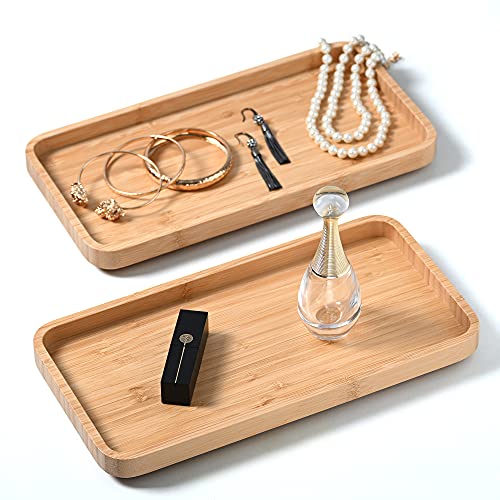What to Consider Before Buying the Best Shower Caddy 2024
Overview
A shower caddy is often intended to dangle from the shower head, however in other circumstances it may hang freely. Suction cup shower caddies include a suction cup attached to the shower wall to assist hold the equipment in place.
The greatest shower caddy will keep all of your bathing equipment organized in a way that is pleasing to you. However, shower caddies come in a range of sizes and forms, and determining which one is ideal can be difficult, especially if this is your first time purchasing one. Not to worry, since this article will teach you all you need to know before purchasing a shower caddy, allowing you to make an informed purchase decision.
Top Picks
-
Best Overall: Simplehuman Adjustable Shower Caddy
-
Best Budget: SEIRIONE Rustproof Shower Corner Caddy
-
Best Hanging: Oxo Good Grips Aluminum 3-Tier Shower Caddy
-
Best Corner: GRTD Corner Shower Caddy
-
Best Tension: Oxo Good Grips Quik-Extend Aluminum Pole Caddy
-
Best Over-the-Door: Umbra Cubiko Shower Caddy
-
Best Adhesive: LivingPai Wall Mount Shower Organizer
-
Best Bamboo: Honey-Can-Do Bamboo Shower Caddy
Considerations when Buying the Best Shower Caddy
1. Material
The material of the shower caddy is one of the most significant aspects to consider when purchasing one. We have aluminum shower caddies, plastic shower caddies, and stainless steel shower caddies.
Stainless steel is the most common material since it is rustproof and long-lasting. It is very simple to clean. Plastic shower caddies, on the other hand, eliminate the danger of rusting altogether, albeit they are prone to mold and mildew growth as well as scum accumulation.
Polyester is a sturdy material, although not as durable as steel or plastic. It is also easily torn. Finally, the material of your shower caddy will be determined by your specific scenario as well as your likes and preferences.
You should keep in mind, however, that if you choose a metal shower caddy, make sure it is rust free or has a protective coating that prevents corrosion. Because the caddy is placed directly in the shower, it will rust fast if proper precautions are not followed.
This will not only make your caddy seem unappealing, but it may also leave rust stains on the shower head, walls, or shower.
2. Style and Aesthetic
Another significant factor to consider when purchasing a shower caddy is its design. Shower caddies are broadly classified into two types: corner and hanging. Corner shower caddies are installed in the shower's corner, either as a shelf or as a pressure-mounted unit.
Hanging caddies frequently contain a hook at the top of the shower caddy pole that fits over the shower door, curtain rod, or shower head.
Caddies come in a variety of sizes and forms when it comes to aesthetics. They also come in a variety of colors and finishes. Various people are drawn to the beauty of the caddies in different ways. Choose a caddy that is visually appealing, both in the bathroom and when carried. But be careful not to choose appearance above quality.
3. Compartments
Different shower caddies have varying numbers of compartments. Furthermore, the compartments have various adjustment levels. It is critical that you carefully assess the quantity and size of your bathing equipment, since some may or may not fit.
For example, if you use lengthy bottles of shampoo in your shower, there's a good possibility they won't fit in a shower caddy with multiple non-adjustable sections. Caddies with fewer compartments but more adjustability, on the other hand, may easily carry large-sized objects.
Caddies made of fabric, on the other hand, do not have the capacity to be adjusted. You only need to assess the quantity and size of pockets to determine whether all of your goods will fit.
In general, the more bathing goods you have, the more storage space you'll need. As a result, make sure the shower caddy has enough capacity to accommodate even the tallest bottles.
4. Where To Installation
Another important factor to consider is the ease of installation. While some caddies are difficult to use, others are considerably simpler, less expensive, and simpler to install and operate.
Common forms of caddies will only bend over the top of your shower and can be clipped to the shower head. The suction cups can then be placed at the bottom.
After removing the caddy from its case, it may be installed in minutes.
The second sort of caddy is made of adhesive and can only be attached to the wall wherever. This is a fantastic alternative if you live in rental housing because it has no effect on the home.
%comparison_table%
FAQs
1. How can I remove rust from my shower caddy?
Take the caddy out of the shower and place it outside or in the kitchen sink. Apply white vinegar to the corroded region, then dab baking soda on the rust patches. Scrub with a nylon pad or scratch-resistant sponge as needed until the rust is removed. Rinse well and pat dry.
2. How do you prevent a shower caddy from rusting?
You may apply a rust-inhibiting spray or spray paint with corrosion protection to protect your caddy against rust. These two solutions are good since they provide long-term security. Boat wax and automotive waxes can also be used, but they require regular reapplication (approximately once a month), so consider whether that is a cleaning regimen that fits into your housekeeping plan.
3. Does stainless steel shower caddy rust in the bathroom?
Yes, stainless steel may rust and corrode, and a stainless steel shower caddy can rust if not cleaned on a regular basis.
If your metal shower caddy begins to rust, it's time to take action! Cleaning your shower caddy on a regular basis is the finest thing you can do. This will keep rust at bay keeping your shower looking brand new.
Conclusion
With this instruction, you should be able to buy and install a caddy that meets your needs and space. Keep in mind that size is important so that you don't wind up with a giant shower caddy that looks cumbersome in your shower. Thank you so much for reading this, and we hope that you can find the best shower caddy for your home.








